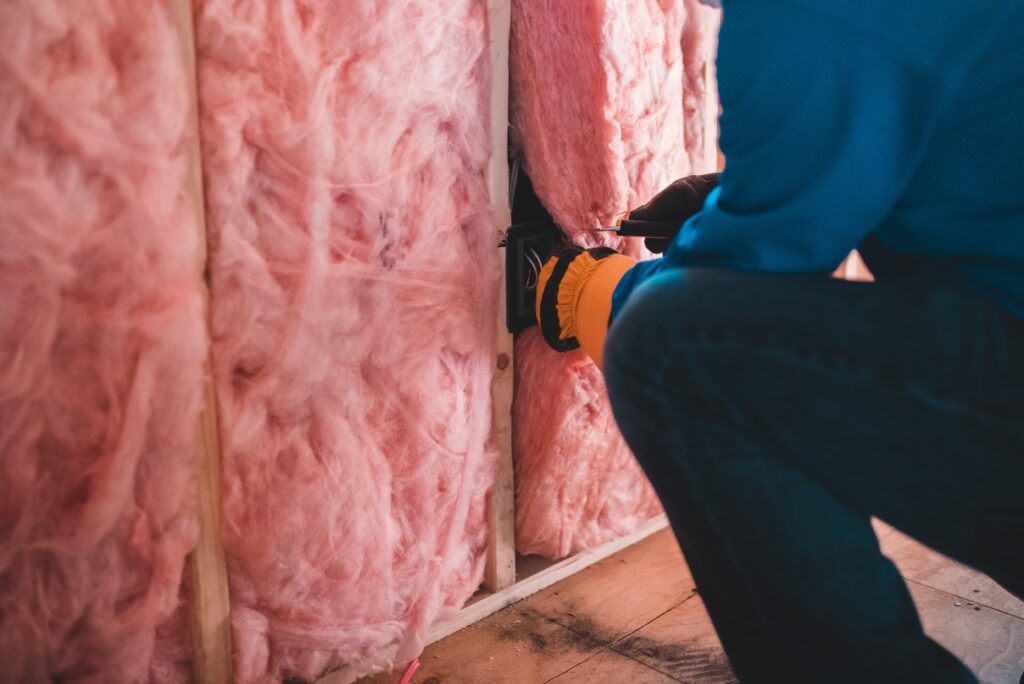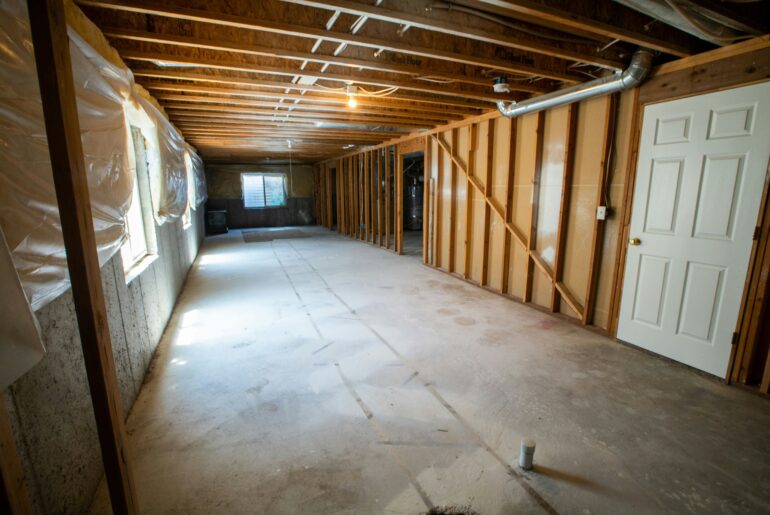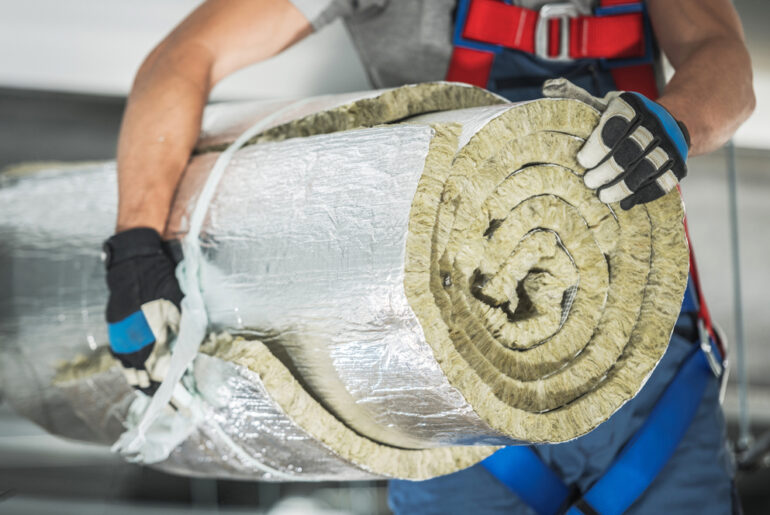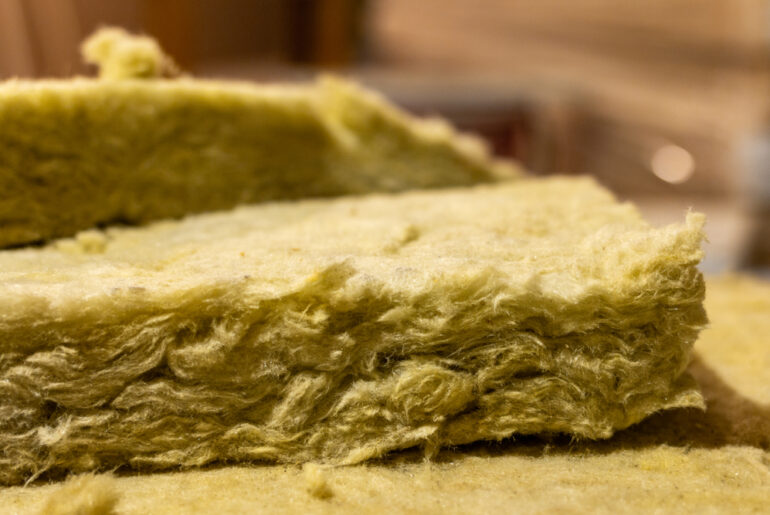The primary difference between cavity insulation and continuous insulation is the size of the material. Continuous insulation is typically used in large sections on large, open surfaces, while cavity insulation is hidden inside a wall, ceiling, or floor.
Continuous insulation is ideal for large, sparkly interrupted surfaces, like the walls or ceiling of a metal building. Cavity insulation is more appropriate for surfaces that will receive a decorative wall covering, like drywall.
Cavity insulation is placed inside the wall as opposed to on the wall, attaching the insulation to the face of the studs or truss chords. Cavity insulation is generally slower to install than continuous insulation, but the results provide a smooth, flat surface that can be finished.
Here we will provide an overview and comparison of continuous insulation vs cavity insulation, while offering some insight where one version of insulation might outperform the other.
What Is the Difference Between Continuous Insulation and Cavity Insulation?
Continuous insulation is generally defined as using standard insulation materials like foam, fiberglass, and mineral wool, just in a larger form. Continuous insulation used in the appropriate manner will not require as much sealing, trimming, or modification as cavity insulation.
In most instances, continuous insulation is preferred when the surface to be insulated has no internal structural support, like a metal building. Most metal buildings get their strength from the wall panels, so internal wall studs are not required, making continuous insulation a time saver.
Cavity insulation is often used when the wall is hollow and contains some amount of structural framework, like studs, chords, joists, or archways. Most cavity insulation includes some sort of mounting tab for easy installation, such as fiberglass batts. In the case of fiberglass batts, the mounting tab also functions as a vapor barrier.
When Is Continuous Insulation Better Than Cavity Insulation?
The primary benefit of continuous insulation is the time required to install it and superior sealing. Because continuous insulation is in larger sections there will be fewer seams. The seams are often the first to fail, so the fewer the better. The seams are then sealed with tape to prevent air leakage.
Continuous insulation also uses its size to speed installation because it does not need to be trimmed as often as cavity insulation. Depending on the continuous insulation you choose, the sections can be as large as 4’ x 12’, providing 48 square feet in a single section.
When Is Cavity Insulation Better Than Continuous Insulation?
Cavity insulation is the version most commonly used in residential homes because it is very effective, provides a clean, flat surface, and does not affect the wall covering in any way. Homes use this type of insulation installation because it is the easiest, least expensive way to gain all three benefits.
Which Is Better?
In most installations, continuous insulation will be less expensive to purchase and install than cavity insulation. Conversely, cavity insulation will often provide more options for both insulation R value and wall coverings.
Continuous Insulation
Pros:
- Great for large, open surfaces like a factory, commercial garage, or warehouse.
- Reduces both seams and waste because the material is usually in large sections, requiring little modification.
- Installs quickly due to the reduced trimming, larger coverage per unit, and reduced seam taping, so less labor is needed.
Cons:
- Not usually the first option where appearance is important because the material is difficult to cover with drywall.
- May require very long fasteners, which can negate any time saved by the large sections.
- Usually requires more than one installer because the units are larger.
- May require the addition of a separate vapor barrier to prevent moisture absorption.
Cavity Insulation
Pros:
- Great for insulating walls with interior framing like those in a home.
- Does not affect the wall in any way, so more wall covering options are possible.
- Can be adapted to virtually any wall thickness to achieve a superior R value.
Cons:
- Takes more time than continuous insulation because it is usually in several small sections instead of a few large ones.
- Can cost more than continuous insulation due to the additional time and material requirements.
- May be overkill in environments like a manufacturing facility that generates large amounts of heat due to machinery operation.
What Are the Different Kinds Of Continuous Insulation?
Fiberglass Batts vs Fiberglass Roll Insulation
The only difference between fiberglass batts and fiberglass rolls is the prefabricated size of the batts, as opposed to one long roll. Fiberglass rolls are typically used in attics and crawl spaces where the run is less often uninterrupted by a window or outlet.
To be clear, either material is essentially interchangeable in function, however batts will prove much more convenient for a DIYer because they will likely already be cut to size. If you accidentally purchase roll insulation instead of batts, you will have to manually cut each batt to fit.
Continuous insulation is appropriate for large spaces like the ceiling of a commercial structure where the surface is minimally interrupted. Continuous insulation is usually installed directly or semi directly to the surface to minimize thermal transfer through conduction of heat.
Rigid Foam Insulation Panels
Rigid foam panels are ideal for both continuous and cavity insulating projects because they provide good R value while establishing a flat surface. Rigid foam panels are also relatively inexpensive and are very lightweight. Most are made from EPS (expanded polystyrene) or XPS (extruded polystyrene).
Mineral Wool
Mineral wool insulation is available in many of the same sizes and R values as fiberglass batts. When used as continuous insulation on a roll, mineral wool is available in very long lengths. Mineral wool does not usually have a mounting tab and is usually held in place by friction, so when used as continuous insulation accurate measuring is required.
Expanding Spray Foam
Expanding spray foam insulation is the most technologically advanced insulation and can be installed as either a continuous layer directly to surfaces, or sprayed inside a cavity and allowed to expand.
Expanding spray foam is typically the most expensive option, but it also provides a vapor barrier, fire resistance, and superior sealing all at once. Spray foam is the only continuous or cavity insulation that may require professional installation.
What Are the Different Kinds Of Cavity Insulation?
Cavity insulation is most commonly found in the form of a fiberglass batt mounted to a paper or foil vapor barrier. Cavity insulating can also be accomplished with rigid foam insulation panels, mineral wool, and expanding spray foam.
Fiberglass Batts
Fiberglass batts are the most common form of cavity insulation because they are designed to fit common wall spacings. This reduces trims, cuts, and the need for additional layers, speeding up the process.
Rigid Foam Insulation Panels
Rigid foam panels are ideal for cavity insulating projects because they provide good R value when installed in layers. Rigid foam panels are easy to modify and are very lightweight. Most are made from EPS (expanded polystyrene) or XPS (extruded polystyrene), but some even basic styrofoam sheets can be used.
Mineral Wool
Mineral wool insulation is used in a similar way to fiberglass batts when used as a cavity insulation. Mineral wool is an effective, durable insulation when cavity mounted that will not settle and provides excellent fire resistance.
Expanding Spray Foam
Expanding spray foam insulation is used as a cavity insulation is typically over applied and allowed to expand beyond the surface. Then a heated wire or saw is used to remove any squeeze out, creating a flat, smooth surface.
Expanding spray foam is likely the most expensive insulation, but DIY kits are available to help reduce labor costs. Closed cell foam is used in spray foam applications due to its high R value per inch and its superior draft reducing qualities.





